Bicycle touring in Poland rarely ends up on the bucket list of most travellers. Born and raised in Poland, I have explored its varied landscapes on two wheels. I’d love to share my insider knowledge to help you organise your cycling adventure in this underrated country.
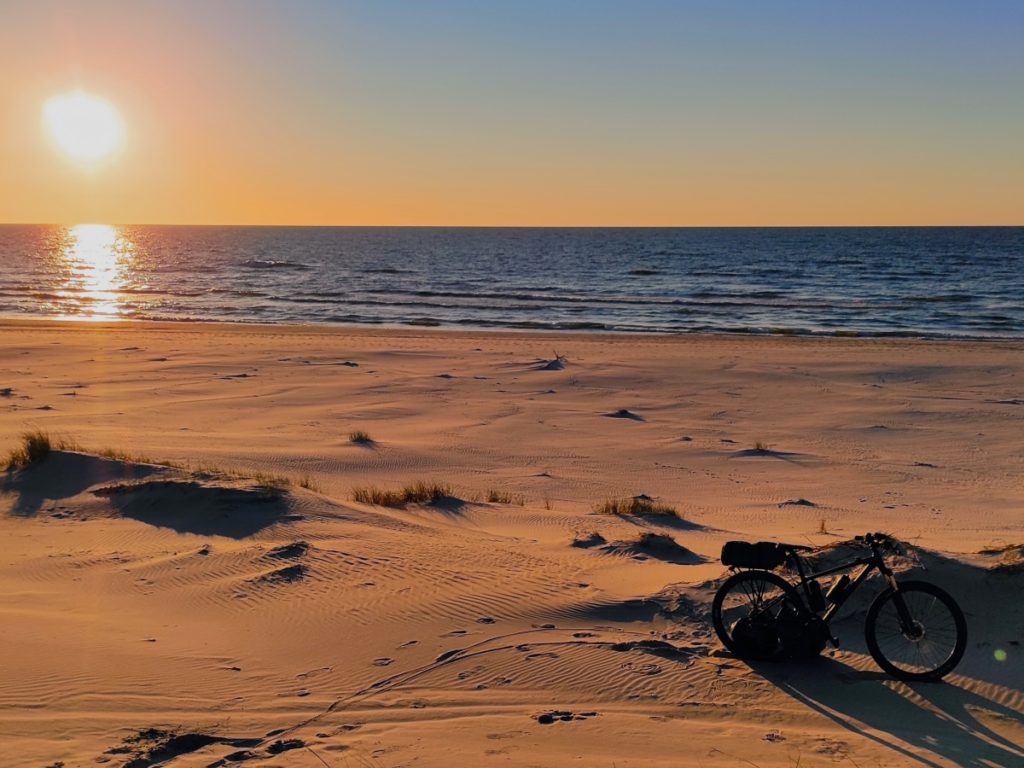
Nestled in the heart of Europe, Poland offers a unique and rewarding experience for cycling enthusiasts seeking an off-the-beaten-path adventure. At the same time, it is a perfect destination for beginner cyclists looking for flatter cycling routes and those wanting to combine their biking holidays with exploring historical and cultural sights.
Throughout this guide, I’ll describe the cycling infrastructure, provide you with some resources to help you plan your adventure and give you some tips to ensure a smooth and exciting journey.
Bike rental in Poland
While there are plenty of bike rentals in Poland, only a few offer trekking bikes or bikes equipped with a luggage rack.
In Kraków, you can rent a trekking bike for about 60 złoty/day from biketrip.pl. They also offer gravel bikes, mountain bikes and bicycle panniers.
The prices for a bike rental in Warsaw are similar. You can hire a trekking bike for 70 złoty/day.
In Gdańsk and Sopot, prices for a bicycle rental can be a little bit higher. For a good quality trekking bike, you will pay 450 złoty/week or 100 złoty/day (lock and helmet included).
Check out also the offer of Decathlon Rent. They have different models of bikes available in their stores all across Poland.
Ukształtowanie terenu
The majority of the Polish territory is lowland plains. For kilometres, you can cycle on almost flat roads, especially if you’re travelling in the central part of the country. The south of Poland consists of mountains: the Carpathians in the east and the Sudetes in the west.
In the north, you should prepare for some more climbs as well. The Masuria and Pomerania regions are pretty hilly. Even though their highest point is just a little higher than 300 metres, the terrain constantly ascends and descends, and the altitude metres slowly add up.
Bike Lanes, Traffic and Safety on the Roads
The cycling infrastructure in Poland is developing dynamically and has drastically improved in the last 10-15 years. In major cities like Warsaw, Gdansk and Wroclaw, bike lanes are pretty decent. In the countryside, bicycle routes mostly lead through less frequented roads or dirt tracks.
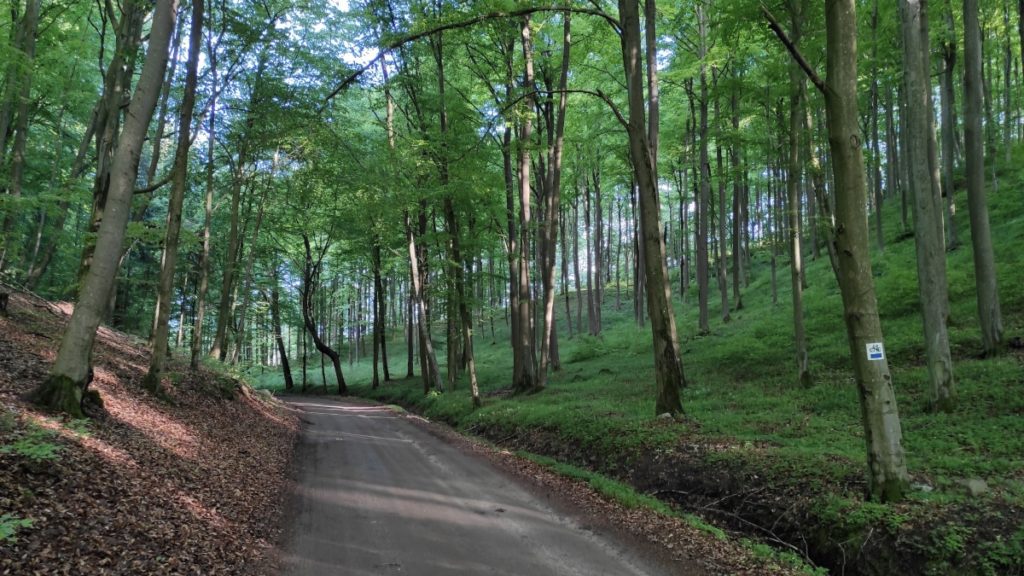
On the main roads, you need to remain cautious. Avoid the so-called National Roads (Droga Krajowa, marked with a red number on the traffic signs). They are usually busy and with a high speed limit. Not all drivers in Poland are considerate towards cyclists (although cycling has experienced a real boom in Poland in the last 20 years, so more and more drivers know how it is to travel on two wheels).
If there is a bike path or bicycle lane, you must cycle on it. If there is none, you should cycle on the road. You can cycle on the pavement if the weather conditions are dangerous (snow, strong wind, fog, heavy rain) or if there is no cycle path and the pavement is wider than 2 metres, along the road with a higher speed limit than 50 km/h.
Your bike has to have two lights (a rear one and a front one), two reflectors (front and back) and a working bell.
It is not obligatory to wear a cycling helmet in Poland.
Don’t drink and cycle! You can face a fine from 300 to 500 PLN.
Mountain biking in Poland
Despite the majority of the country being lowland plains, Poland has some terrific places for mountain biking.
If you’re looking for challenging single tracks and breathtaking views, you should head to Karkonosze Mountains. Around Szklarska Poręba, you’ll find a great network of trails with various difficulty levels.
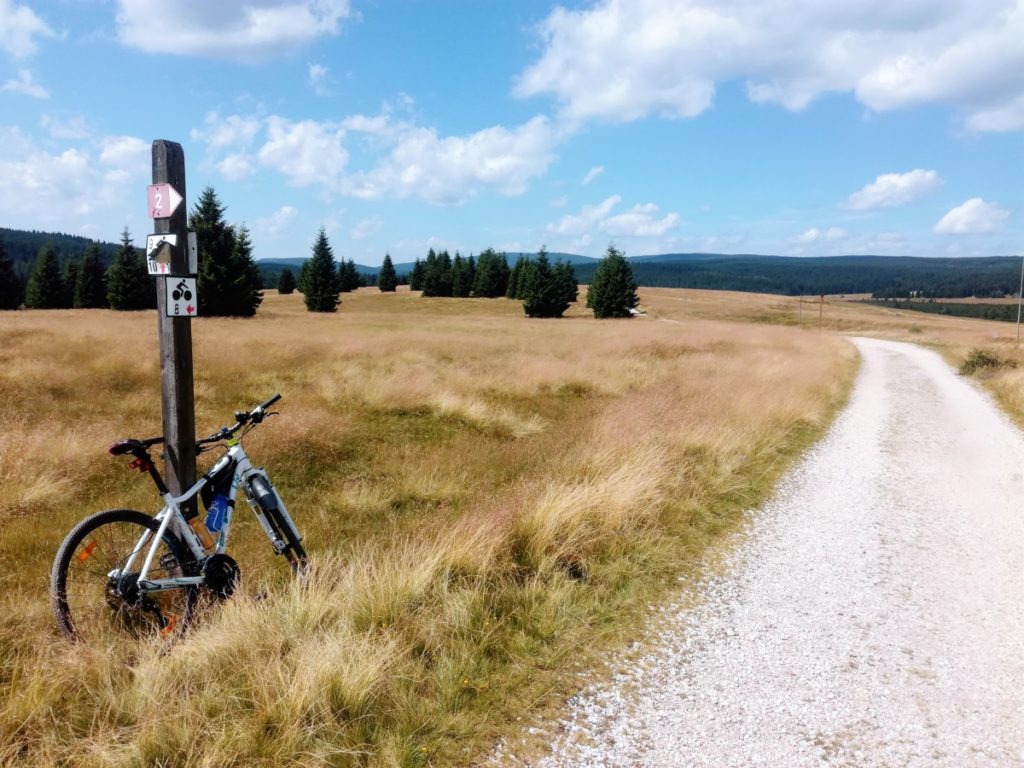
If you value solitude, you’ll have a great time biking in Owl Mountains (pol. Góry Sowie)– a region of Poland still unspoilt by mass tourism.
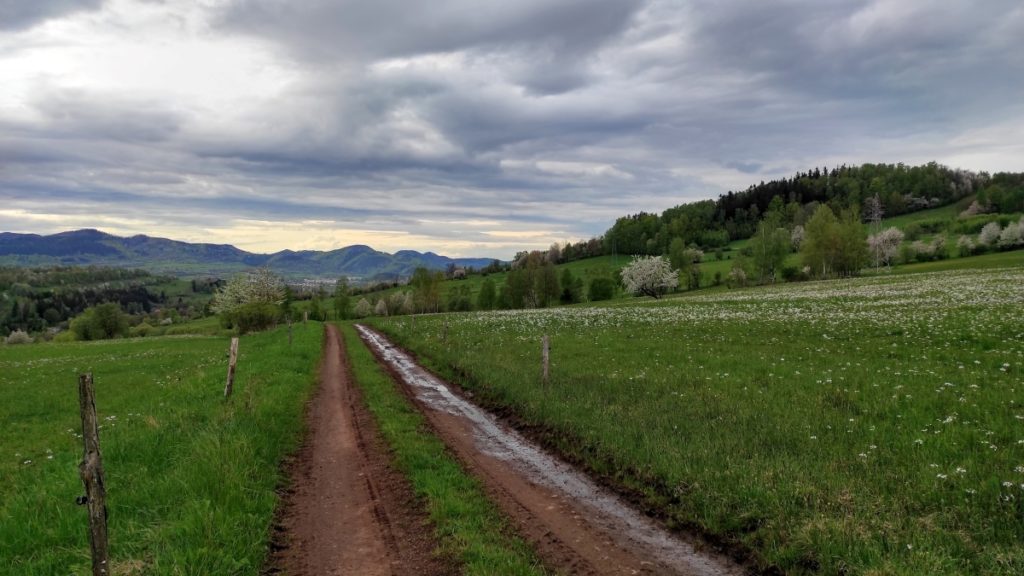

You can find some adventurous trails also in Beskidy Mountains.
Taking a bicycle on a train in Poland
Travelling by train with your bike in Poland can be confusing at times. A lot depends on the type of train and the train operator.
PKP Intercity
The biggest operator for intercity trains in Poland is PKP Intercity.
Nie wszystkie PKP Intercity pociągi mają miejsca do przewozu rowerów. W planerze podróży online, możesz znaleźć połączenia z miejscami na rowery klikając the detailed search engine under the search button and ticking the possible transport of bicycle box.
When buying your ticket, click on Carriage of Goods i wybierz bicycle transport. Bilet na rower kosztuje 9,10 zł.
Większość pociągów Intercity wyposażona jest w wagon z wieszakami, na których możesz umieścić swój rower. W niektórych pociągach TLK i IC nie ma wagonów rowerowych. W takim przypadku czasami też można przewieźć rowery, zazwyczaj z przodu pierwszego wagonu lub z tyłu ostatniego wagonu.
Bilety można kupić online lub w kasie na dworcu.
Więcej informacji o przewozie rowerów znajdziesz tutaj.
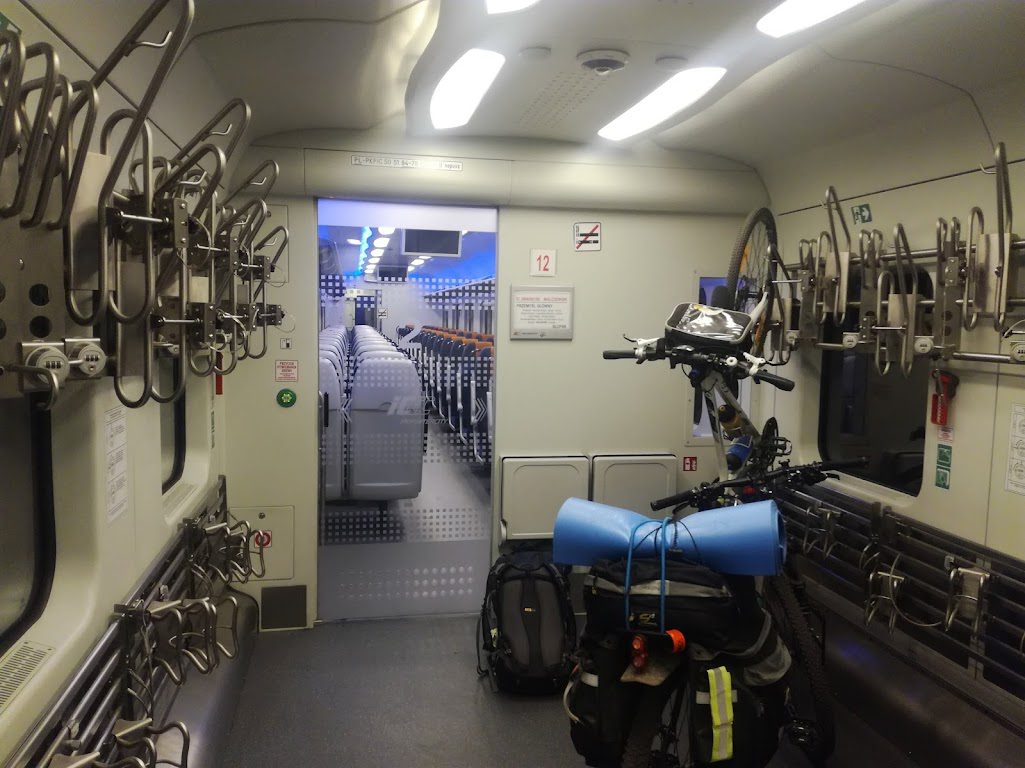
Przewoźnicy regionalni
Rowery w pociągach regio to jeszcze inna bajka. Każdy przewoźnik w każdym regionie ma inne zasady.
On most Regio trains in Poland, you will pay 8,20 zł for the bicycle ticket, regardless of the distance and route. Many local trains have special hooks for bicycles and low floors. The crew can deny you access to your bike if the train is full. You can buy the ticket for your bike at the station or, for most regional trail operators, on the polregio.pl .
Wanna learn more about travelling with your bicycle by train in Europe? Read this article.
Pogoda
The climate in Poland is moderate. The winters are usually mild, but you can expect some weeks with snow and temperatures often dropping to sub-zero. Summers are warm but, especially in August, can be rainy. In the evening, afternoon thunderstorms are a regularity.
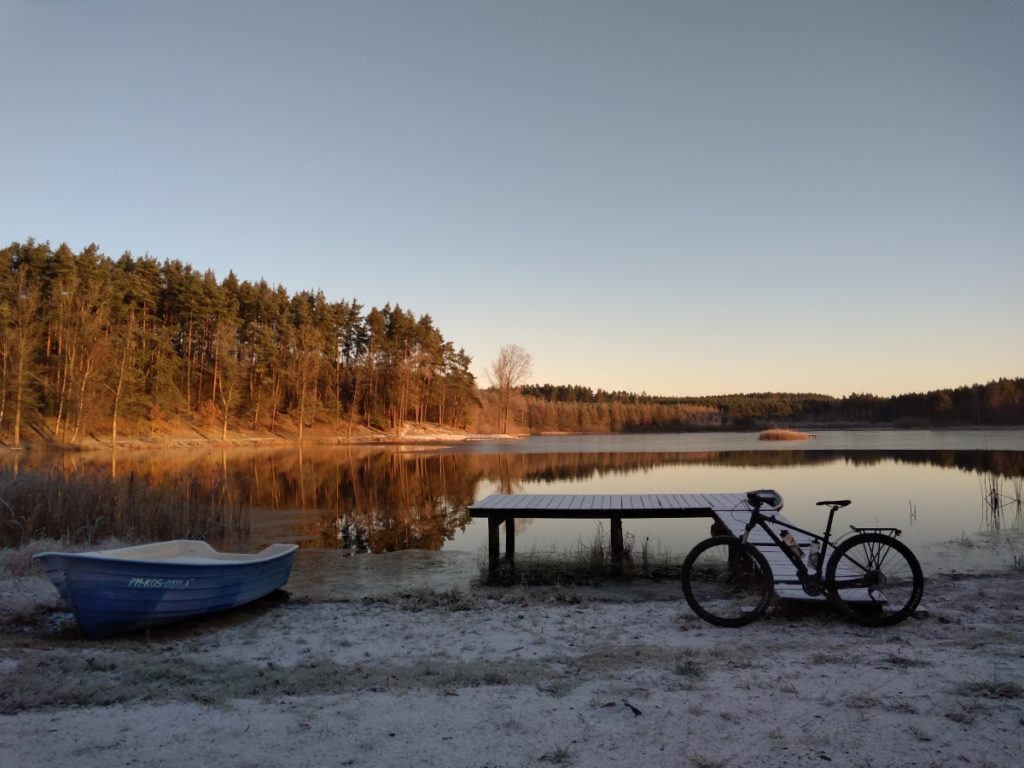
The best time for cycling holidays in Poland is from late April to mid-October. If you plan to cycle along the coast, I’d avoid visiting during the summer holidays when it gets crowded.
Early Autumn is a great time to explore Poland on your bike. The mornings might be a bit chilly, but the colourful leaves on the trees create a beautiful sight, often called The Golden Polish Autumn.
Spanie na dziko
Na Mierzei Wiślanej możliwe jest isn’t strictly prohibited and is generally accepted by the lakes and rivers (as long there are no signs forbidding it). In the forests, you shouldn’t wild camp outside designated areas (you can find a map tutaj).
It is illegal to wild camp in national parks and nature reserves and at most beaches by the Baltic Sea.
You can read more about wild camping in Europe tutaj.
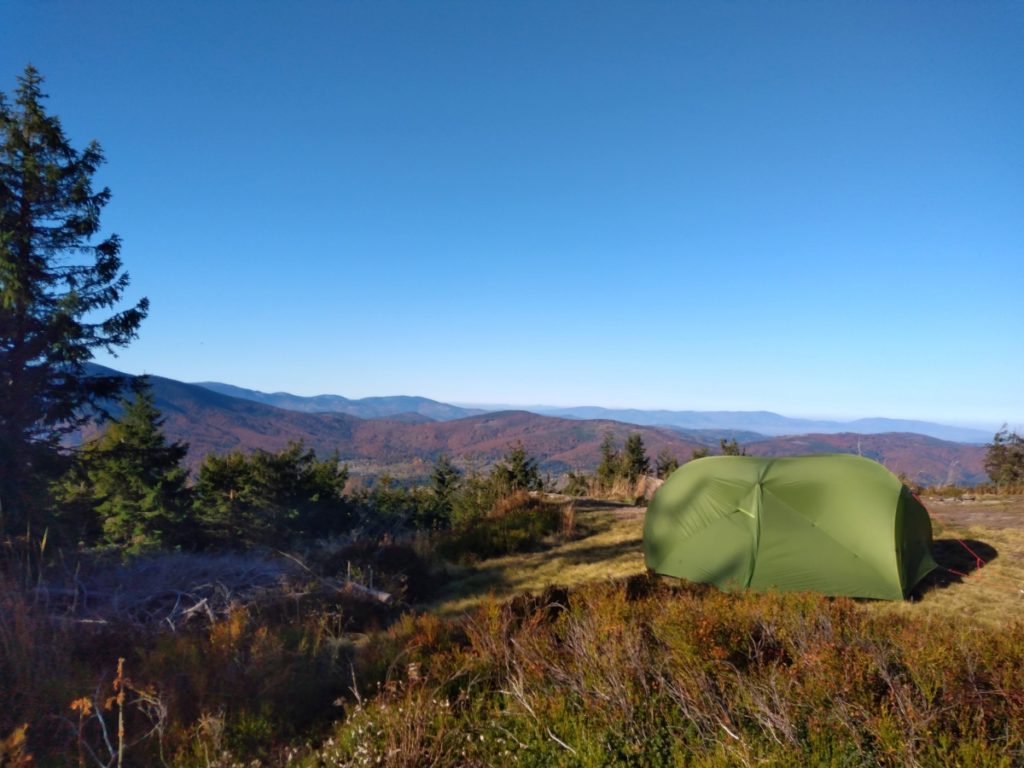
Noclegi
Couch Surfing and WarmShowers in Poland
Hospitality-sharing networks are fairly popular in Poland. If you’re up to meeting some locals while bicycle touring, you should give CouchSurfing i Warmshowers a go. Along the popular Greenvelo route, it might be hard to find hosts, but in the more central areas of Poland and larger cities, you shouldn’t have a problem. Warmshowers is slightly less popular than in Western Europe, with only 2261 members in Poland.
B&Bs, hotels and hostels in Poland
Accommodation in Poland is quite affordable compared to Western Europe. The easiest way to find a place to stay is, of course, booking.com. If you are price-conscious or want more options, you should also check out a local website nocowanie.pl. Some small B&B owners focusing on domestic tourism use it instead of booking.com. The website is only in Polish, so it will require some use of Google Translate.
It’s usually cheaper to stay in places called agroturystyka lub gospodarstwo agroturystyczne. In theory, this means a farm stay, but many people use this term to describe a regular B&B or homestay.
Campsites in Poland
Camping is a popular activity in Poland. If you value having a shower or aren’t comfortable with wild camping, staying on official campsites is a great option. You can find official campsites on Google Maps, iOverlander or a Polish website polskicaravaning.pl.
The prices vary a lot. Sometimes you will pay only 6-7 euros per person with a tent, other times almost twice the price. Usually, you are charged separately for each person and per tent, so travelling alone always never pays off here.
Pieniądze
Despite being a member of the EU, Poland hasn’t adopted the euro. Its currency is still Złoty (PLN). 1 PLN=0,22 EUR.
Card payments are popular in Poland. You will only need cash if you divert from the beaten track and have to buy food in small shops in the countryside. Also, most B&Bs, homestays, and campsites don’t accept cards.
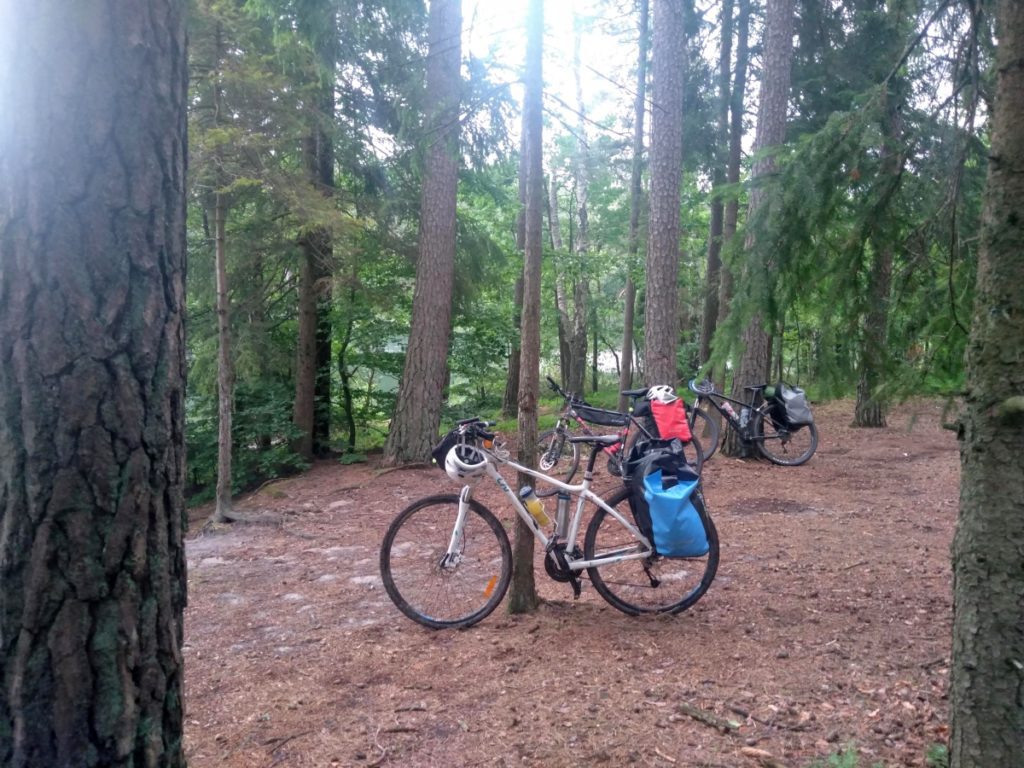
Internet and local sim card
If you have a SIM card from one of the EU countries, you can use your phone and the internet like at home. Just check with your provider if you have another data limit for roaming than at home.
The 4G network coverage is pretty good, so even if you go off the beaten path, you still get a signal almost everywhere.
If you don’t have an EU SIM card, you can get a prepaid SIM card from one of the Polish providers: Orange, T-Mobile, Plus or Play. For 30 GB for 30 days, you will pay about 25-30 złoty (ca. 5-6 euros).
You can buy a SIM card in many regular shops, post offices or stores of mobile providers (you should find one in every middle-sized town). Bring your ID or passport to be able to register the card.
Woda
It’s generally safe to drink tap water in Poland.
In most regions, the distances between towns and villages are not long, so carrying an extensive water supply isn’t necessary, as you’ll always find shops or places to refill.
Jedzenie
As mentioned, there are rarely long stretches between villages and towns, so you won’t have trouble restocking food while cycling in Poland.
If you want to try traditional Polish food, you should order pierogi (dumplings) and schabowy.
Is Poland vegetarian-friendly?
Despite Polish cuisine being traditionally meat-based, Poland is a good country for vegetarians and vegans. In big cities, vegan and vegetarian restaurants have been popping up like mushrooms. Even in the small town where my parents live, I can easily find tofu, various sorts of soya products and all kinds of vegetarian and vegan food.
Best cycling routes in Poland
I’ve written another article describing some of the best cycling routes in Poland. You can find it here.
How to find cycling lanes and cycling routes in Poland – the best resources
There is little information on cycling routes in Poland on the English-speaking internet. That’s probably one of the main reasons most foreigners limit themselves to the better-known Eurovelo or Greenvelo routes.
Luckily there are some great resources in Polish (which you can access by using Google Translate in your browser) that will help you explore some of the lesser-known cycling routes.
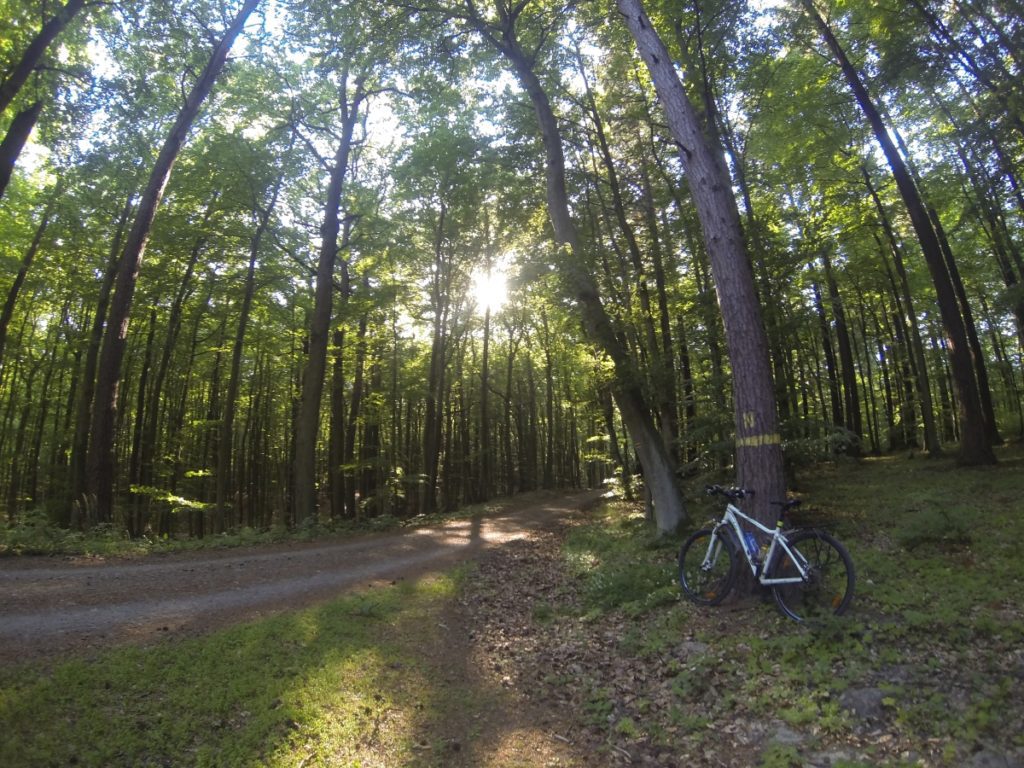
Velomapa.pl
Velomapa.pl is a terrific source when you’re figuring out your cycling route in Poland. Its main feature is the map with cycling routes across the country. When you click on the trail that sparks your interest, you’ll find short descriptions, useful links, and photos. You can also download the GPX file.
They also have a map of cycling infrastructure—an amazing tool if you’re looking for safe cycling paths in, out of, and through the cities.
Another feature is the map of bicycle-friendly places – hotels, B&Bs, bars, bike rentals, etc.
Recently, the Velomapa team has launched a mobile app for Android and iPhone. I haven’t had a chance to test it yet but I’ll surely use it during my summer in Poland this year.
Wirtualneszlaki.pl
Another handy website for planning your cycling adventure in Poland is wirtualneszlaki.pl. The principle is quite similar – you have a map with cycling routes and cycle paths equipped with a route planner function. Furthermore, on wirtualneszlaki.pl, you will also find hiking trails if you don’t want to limit your holiday activities to biking.
Znajkraj.pl
Znajkraj is a knowledgeable blog about cycling. Szymon, the author, focuses on cycle routes in Poland. The website is available in Polish only, but with the help of Google Translate, you’ll find tons of great route suggestions with thorough descriptions, making the planning process much more straightforward.
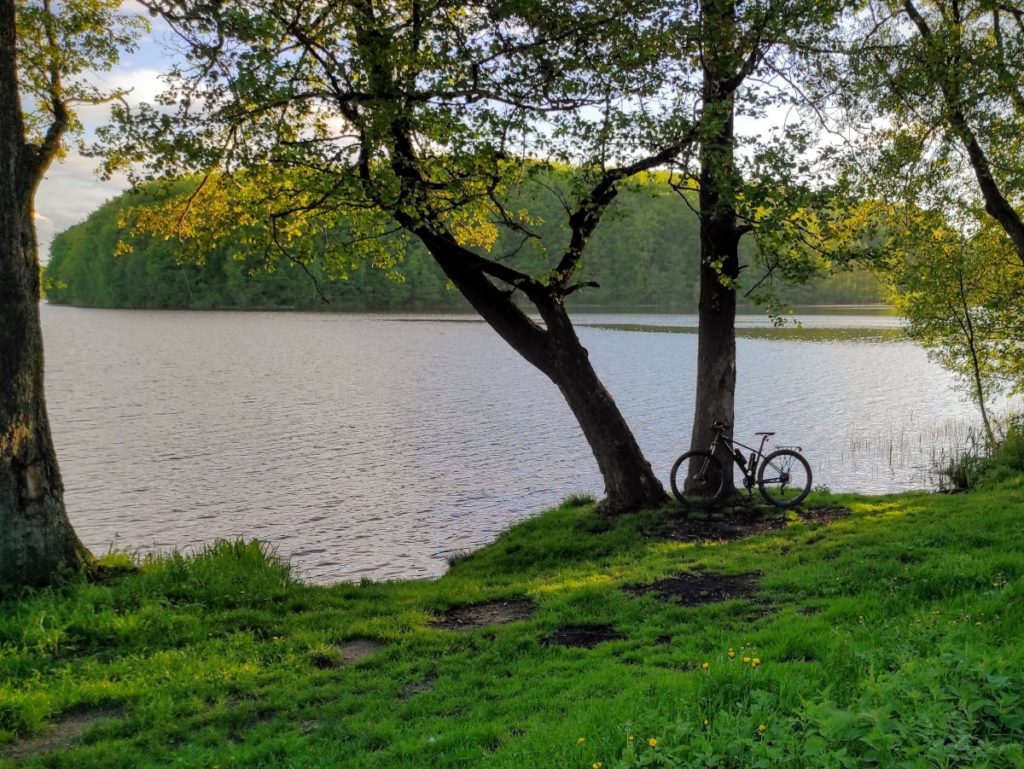
Odnośnik zwrotny: Inspiration til cykelture rundt i Europa – Med tog fra Danmark til udlandet
Odnośnik zwrotny: La Pologne à vélo - L'Europe à vélo
Thank you for your website. It’s full of good and useful informations!
I plan to travel by bike (and by train with my bike) in the baltic countries and Poland next summer and your website is a treasure.
Thanks for your nice comment, Enjoy your trip!